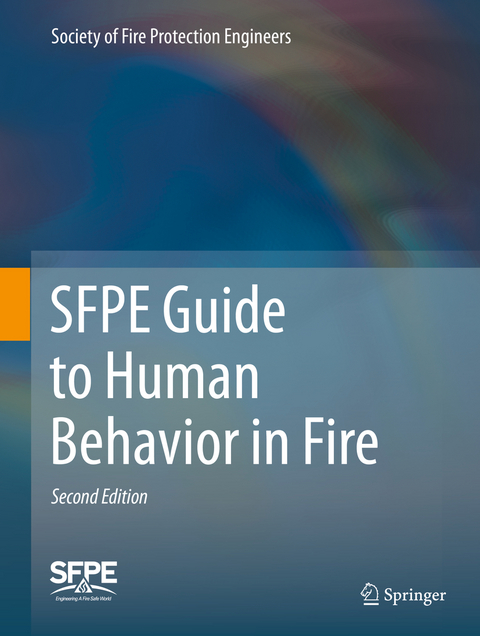
SFPE Guide to Human Behavior in Fire
Springer International Publishing (Verlag)
978-3-319-94696-2 (ISBN)
The Second Edition of SFPE's Engineering Guide: Human Behavior in Fire provides a common introduction to this field for the broad fire safety community: fire protection engineers/fire safety engineers, human behavior scientists/researchers, design professionals, and code authorities. The public benefits from consistent understanding of the factors that influence the responses and behaviors of people when threatened by fire and the application of reliable methodologies to evaluate and estimate human response in buildings and structures.
This Guide also aims to lessen the uncertainties in the "people components" of fire safety and allow for more refined analysis with less reliance on arbitrary safety factors. As with fire science in general, our knowledge of human behavior in fire is growing, but is still characterized by uncertainties that are traceable to both limitation in the science and unfamiliarity by the user communities. The concepts for development of evacuation scenarios for performance-based designs and the technical methods to estimate evacuation response are reviewed with consideration to the limitation and uncertainty of the methods. This Guide identifies both quantitative and qualitative information that constitutes important consideration prior to developing safety factors, exercising engineering judgment, and using evacuation models in the practical design of buildings and evacuation procedures. Besides updating material in the First Edition, this revision includes new information on:
Incapacitating Effects of Fire Effluent & Toxicity Analysis Methods
Occupant Behavior Scnearios
Movement Models and Behavioral Models
Egress Model Selection, Verification, and Validation Estimation of Uncertainty and Use of Safety Factors
Enhancing Human Response to Emergenc ies & Notification of Messaging The prediction of human behavior during a fire emergency is one of the most challenging areas of fire protection engineering. Yet, understanding and considering human factors is essential to designing effective evacuation systems, ensuring safety during a fire and related emergency events, and accurately reconstructing a fire.
The SFPE Task Group on Human Behavior in Fire consists of the leading researchers on the topic, from academia, industry, and government. The Society of Fire Protection Engineers (SFPE) is the professional society representing those practicing the field of fire protection engineering. The Society has over 4,600 members and 92 chapters, including 17 student chapters worldwide.
1 Introduction.- 2 Integrating Human Behavior Factors into Design.- 3 Population Characteristics.- 4 Occupant Behavior Concepts - Cues, Decisions & Actions.- 5 Effects of Fire Effluent.- 6 Development and Selection of Occupant Behavioral Scenarios.- 7 Calculation of Effects of Fire Effluent.- 8 Physical Movement Concepts.- 9 Egress Model Selection.- 10 Egress Model Testing.- 11 Estimation of Uncertainty and Safety Factors.- 12 Enhancing Human Response to Emergency Notification and Messaging.- 13 Managing the Movement of Building Occupants.
| Erscheinungsdatum | 27.08.2018 |
|---|---|
| Zusatzinfo | XIV, 159 p. 24 illus. |
| Verlagsort | Cham |
| Sprache | englisch |
| Maße | 210 x 279 mm |
| Gewicht | 694 g |
| Themenwelt | Naturwissenschaften ► Biologie ► Humanbiologie |
| Technik ► Bauwesen | |
| Schlagworte | egress • Fire Protection • fire protection engineers • Fire safety • fire science • Fire Situation Management • human behavior • occupant movement • people components |
| ISBN-10 | 3-319-94696-X / 331994696X |
| ISBN-13 | 978-3-319-94696-2 / 9783319946962 |
| Zustand | Neuware |
| Informationen gemäß Produktsicherheitsverordnung (GPSR) | |
| Haben Sie eine Frage zum Produkt? |
aus dem Bereich


